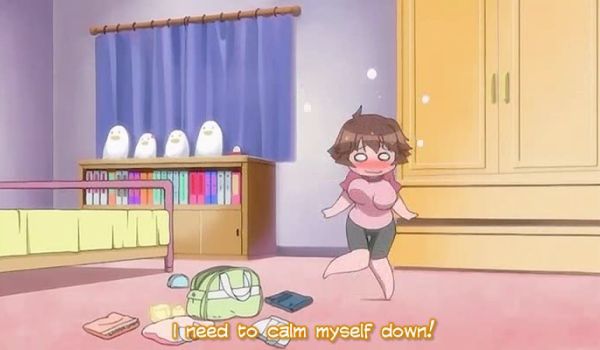
Meditation is good for body and mind. (But playing The Sims 3 is more fun.)
Another question from Quora: What can I start doing now that will help me a lot in about five years?
The asker identifies as a 23-year old student, but the answer I will give here in some detail applies to pretty much everyone who is not a child and who expects to live for another five years or more.
Get started with meditation and/or brainwave entrainment.
Get started today, because the benefits accumulate over time. They actually compound, as in compound interest. Meaning: Not only is your brain slightly improved each time you meditate, but after you have meditated for five years, each 20-minute session is more effective than it was when you started. After ten year years, it is even more effective, and so on. After decades of reasonably regular meditation practice, meditation is amazingly powerful. You can enter into a deep state of meditation literally in a heartbeat, faster than a single breath. I am not making this up, I just tested this standing on my cold kitchen floor before I started writing this entry. There are others who are far more attuned to meditation than I am. But the point is, the sooner you get started, the more difference it will make every day for the rest of your life.
A habit of meditation will actually change your brain in ways that are visible on a tomography, but this takes many years. The changes first happen on a microscopic level. As more and more connections form in higher levels of your brain, the way it functions is slowly improved. This is how meditation becomes more powerful over time. It is not pure magic, although it was indistinguishable from magic until a few years ago. (And thus was often ridiculed by the would-be scientific classes of non-scientists.)
Get started today also because it does not take any time, so you won’t lose out on anything else you do. Meditation and brainwave entrainment both reduce the time you need to sleep to retain the same wakefulness, concentration and body repair. Most of you probably sleep too little as is, so I don’t recommend you sleep less. But you can, if you don’t want to be more clear-headed, energetic and healthy than you are today. A rule of thumb is that half an hour of meditation replaces an hour of sleep, but an hour of meditation does not replace two hours of sleep. In other words, you cannot simply replace sleep with meditation. But a moderate amount of meditation – up to an hour at least – will actually be free or more than free, leaving you as much time as before to do all the other things you want to do in life. More time, actually, especially as you get more attuned and your meditation becomes more powerful.
Secular meditation is now widely taught. If you already have a religion, you may want to learn the form of spiritual practice that is practiced in it, whether it be meditation, contemplation, chanting, holy dance, ritual prayers, holy reading or something else. But I will assume that the reader does not already practice wordless prayer or something equal to it, and recommend that you take up scientific meditation.
Rather than instruct you in meditation, as I did when the Internet was young, I think I should just refer you to the mostly harmless website Project Meditation. I am not really affiliated with them, I just hang out at their forum occasionally and also use their brainwave entrainment product, LifeFlow. You don’t need to be a customer to use their other services, including a thorough introduction to meditation, and a very good section called Principles of Meditation & Entrainment. It is written by one of the forum members, not the site staff. This particular person was the reason why I decided to go for Project Meditation rather than their more advertising competitor. His writing resonates so much with my heart that I would recommend him over myself if you want advice.
The text also refers to brainwave entrainment. There are various technologies for doing this, and the LifeFlow sound track used three of them. There are also visual systems. I recommend first practicing meditation without entrainment for a couple weeks, then use entrainment if you want, and eventually you will no longer need it for ordinary meditation. You may use them for special purposes perhaps. I use delta entrainment as a prelude to sleep, since I have Delayed Sleep Phase Syndrome and cannot naturally produce deep sleep early in the night. But I would not recommend a newbie to use delta entrainment. I have recommended it before, but it seems to cause various nasty side effects in untrained people, or at least some untrained people, such as headache or seeing double. I guess it is a bit like asking a couch potato to run a competition sprint. Start with something easier.
Project Meditation has a free 10Hz sample you can download. Looping this MP3 file, you can use it for as long as you want, so you don’t need to buy anything unless you want to proceed to the more fancy stuff. There are also various other free brainwave entrainment opportunities on the Web, including some YouTube videos. Video can help you concentrate in some cases if your mind tends to wander a lot.
Again, let me say: You don’t spend time on meditation. You gain time from meditation. The exception is the first day, when you learn what it is about and decide on which technique to use. After that, it is free and more than free. It improves your brain, it improves your immune system, and it makes you feel better throughout the days and years remaining of your life.
One small warning: I only recommend a modest amount of meditation for ordinary people who want to stay ordinary people. Excessive meditation can cause dramatic changes in personality, seemingly supernatural experiences, and in some cases actual psychosis (insanity), at least if there is a family disposition toward it. 20-40 minutes a day should be fine, but meditation for hours a day should only be undertaken under the guidance of an expert and after conferring with health professionals. Of course, the same goes for eating several pounds of oranges a day, so I am mostly disclaiming here.








